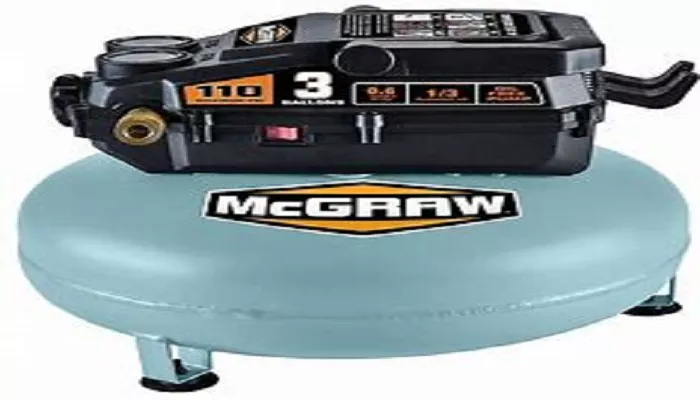The linear compressor is a key innovation in modern refrigeration technology, particularly in LG refrigerators. Unlike traditional reciprocating compressors, which rely on a rotary motor and piston mechanism, a linear compressor uses a linear motor to drive the piston in a straight line, reducing energy consumption and mechanical wear. This technology enhances efficiency, durability, and noise reduction, making it a preferred choice in high-end refrigeration systems.
Working Principle of a Linear Compressor
Basic Structure
A linear compressor consists of the following main components:
- Linear Motor: Converts electrical energy into linear motion (back-and-forth movement).
- Piston: Moves linearly inside a cylinder, compressing the refrigerant gas.
- Spring System: Helps maintain resonance and smooth piston movement.
- Cylinder & Discharge Valve: Where refrigerant compression and release occur.
How It Operates
- Electrical Input: The linear motor receives alternating current (AC), creating a magnetic field that moves the piston back and forth.
- Piston Movement: Unlike rotary compressors, the piston moves in a straight line, reducing side forces and friction.
- Refrigerant Compression: As the piston moves forward, it compresses the refrigerant gas, which then flows through the condenser.
- Resonance Effect: The spring system helps maintain an efficient oscillating motion, reducing energy loss.
Key Differences from Traditional Compressors
| Feature | Linear Compressor | Reciprocating Compressor | Rotary Compressor |
|---|---|---|---|
| Motion Type | Linear (back-and-forth) | Rotary-to-linear conversion | Rotary only |
| Energy Efficiency | High (reduced friction) | Moderate | Low to moderate |
| Noise Level | Very low | Moderate to high | Low to moderate |
| Mechanical Wear | Minimal (no crankshaft) | High (multiple moving parts) | Moderate |
| Cost | Higher initial cost | Lower initial cost | Moderate |
Advantages of LG’s Linear Compressor
Energy Efficiency
- Reduces power consumption by up to 30% compared to conventional compressors.
- Operates at variable speeds, adjusting cooling power based on demand.
Noise Reduction
- Eliminates the crankshaft and connecting rod, reducing vibration.
- Typically operates below 40 dB, making it quieter than traditional compressors.
Durability & Reliability
- Fewer moving parts mean less mechanical wear and longer lifespan.
- LG’s design includes advanced sensors to prevent overheating and overloading.
Precise Temperature Control
- Adjusts cooling output in real-time, maintaining consistent temperatures.
- Reduces temperature fluctuations, improving food preservation.
Disadvantages & Challenges
Higher Initial Cost
- More expensive to manufacture than reciprocating or rotary compressors.
- Repairs can be costly due to specialized components.
Complex Control System
- Requires advanced electronics to regulate piston movement.
- Sensitive to voltage fluctuations, needing stable power supply.
Limited Repair Options
- Fewer technicians are trained to service linear compressors.
- Some parts may require OEM (Original Equipment Manufacturer) replacements.
LG’s Innovations in Linear Compressor Technology
Inverter Linear Compressor
- Uses an inverter to adjust motor speed dynamically.
- Enhances energy savings and reduces wear.
Smart Diagnostics & Protection
- Built-in sensors detect abnormal operation (e.g., overheating, power surges).
- Automatically shuts down to prevent damage.
Eco-Friendly Refrigerant Compatibility
- Works efficiently with R600a (isobutane), a low-global-warming-potential refrigerant.
Maintenance & Troubleshooting
Common Issues
- Failure to Start: Could be due to power supply issues or motor failure.
- Overheating: Caused by dirty condenser coils or excessive load.
- Unusual Noises: May indicate loose components or refrigerant leakage.
Preventive Maintenance Tips
- Clean condenser coils every 6 months.
- Ensure proper ventilation around the refrigerator.
- Avoid overloading the fridge to reduce strain on the compressor.
When to Call a Professional
- If the compressor makes loud knocking sounds.
- If the fridge is not cooling despite running.
- If error codes appear on the display panel.
Comparison with Other Compressor Types
Linear vs. Reciprocating Compressor
Linear: More efficient, quieter, but costly.
- Reciprocating: Cheaper, noisier, higher maintenance.
Linear vs. Rotary Compressor
- Linear: Better for variable cooling demands.
- Rotary: Simpler, but less efficient at low loads.
Linear vs. Scroll Compressor
- Linear: Better for residential use (smaller size).
- Scroll: Used in commercial refrigeration (higher capacity).
Future Trends in Linear Compressor Technology
- AI Integration: Smart fridges will optimize cooling based on usage patterns.
- Improved Materials: Lighter, more durable pistons and magnets.
- Wider Adoption: More brands may shift to linear compressors for energy compliance.
Conclusion
The linear compressor in LG refrigerators represents a significant advancement in cooling technology, offering superior energy efficiency, noise reduction, and durability. While it has a higher initial cost and requires specialized maintenance, its long-term benefits make it a worthwhile investment. As technology evolves, linear compressors are expected to become even more efficient and widely adopted in the refrigeration industry.
For consumers seeking a high-performance, eco-friendly refrigerator, LG’s linear compressor models are an excellent choice. Proper maintenance and understanding of its operation can ensure optimal performance and longevity.

